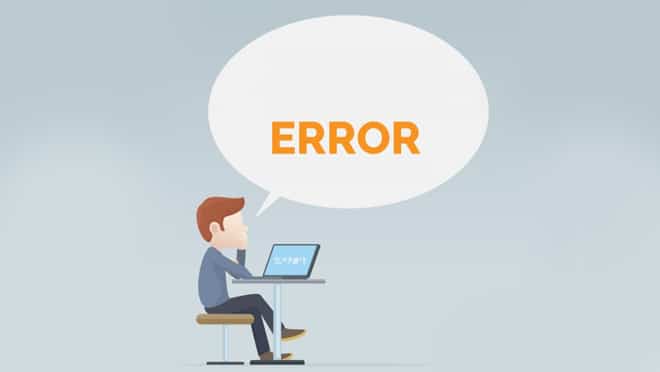Are you planning on building your website? Then the first thing you have to take notice of is how you can improve your technical SEO! Focusing on search engine optimization has its benefits, especially if your goal is to drive traffic and potential clients for your online business. However, the question is how you can begin doing so?
Whether you’re a beginner or expert in SEO, you need to make sure that you look into the various facts and tips on how to rank higher on search engines – wondering where to begin? Read on as I show you the seven ways to boost technical SEO and rank higher!
Seven Ways to Boost Technical SEO and Rank Higher
Are you wondering about the ways you can boost your technical SEO? Here are the seven best ones you can start with now:
1. Make Your Website Mobile-Friendly
For starters, you need to make sure that your entire website is mobile-friendly! After all, the major algorithm update made a few years back was to prefer mobile-friendly and responsive websites. Some sites were even penalized for not focusing on mobile-friendliness!
 What you can do to check if your website is mobile-friendly is using some free and useful tools, like:
What you can do to check if your website is mobile-friendly is using some free and useful tools, like:
- Google’s Mobile-Friendly Test
- GTMetrix
- Bing’s Mobile-Friendliness Test Tool
- HubSpot’s Website Grader
If it doesn’t pass, ensure that you change the layout of your website to make it easier for mobile users to navigate around. Remember, most people use mobile phones for searching and surfing the web now!
2. Speed Up Your Website
Besides having to improve the mobile-friendliness of your website, you’ll also need to make sure that your entire site is speedy, too! People won’t want to stay on a webpage that takes more than a minute or so to load. We want quick and accurate results, and we want it quick and easy to obtain!
 With that being said, make sure that you make your website to load as quickly as possible for search bots to rank higher. Here are some things you can do:
With that being said, make sure that you make your website to load as quickly as possible for search bots to rank higher. Here are some things you can do:
- Optimize your website’s images
- Enable browser caching
- Enable compression
- Reduce your server’s response time
- Use content delivery system (CDN)
3. Run a Weekly Technical Audit to Fix Site Errors
Just because the search engine algorithm changes every few months or years doesn’t mean you can just leave your website before the next big change rolls in! You have to make sure that your website is in tiptop shape and have it checked at least once a week to keep it running at its best every day.
 Doing a weekly website audit can help you do so, which also increases your chance of ranking higher on search engine results pages. You can do a site audit with useful and effective tools like SEMrush, Ahrefs, or Moz.
Doing a weekly website audit can help you do so, which also increases your chance of ranking higher on search engine results pages. You can do a site audit with useful and effective tools like SEMrush, Ahrefs, or Moz.
4. Eliminate all 404s or Broken Pages and Links
If ever your website experiences 404 errors or any broken links and pages, then it signifies that you’re linking to pages that don’t exist at all. And doing so isn’t the best for user experience, nor will it be okay when search bots crawl through your website. Google won’t crawl broken pages, and it affects your rankings and authority.
 If ever you do use a broken link, then it’s best to set up 301 directs, which has the old page bring the user to its new page. You can find out if you have broken links around your website with tools like LinkMiner or Google Search Console.
If ever you do use a broken link, then it’s best to set up 301 directs, which has the old page bring the user to its new page. You can find out if you have broken links around your website with tools like LinkMiner or Google Search Console.
5. Eliminate Duplicate Content and Mixed Content Issues
If ever you have two or more webpages with identical content, then it will be difficult for search engines to know which is to be ranked first. Because of this, your search engine rankings begin to falter, affecting your website traffic. That’s why it’s essential to remove any sign of duplicate content on your website with useful tools.
All your pages should be unique, so you can either edit the content to avoid duplication or remove those duplicate pages. But if you need to have duplicate content around your website, then add a rel=”canonical” link to signal search engines that this page is the one to be shown in search results.
6. Optimize Internal Links and Disavow Toxic Backlinks
Backlinks and internal links are essential for your search rankings, too. But, you have to ensure that the backlinks you include in content are accurate and with high authority. Some can be quite toxic and need to be removed, which you can have checked through the Google Search console, so you know their domain score and evaluate if they are important and help with your website.
 Furthermore, it’s essential to optimize your internal links by using descriptive keywords in your anchor texts, which can give sense to keywords your source page is targeting.
Furthermore, it’s essential to optimize your internal links by using descriptive keywords in your anchor texts, which can give sense to keywords your source page is targeting.
7. Create an XML Sitemap and Submit It
When you’ve already done with the rest of these steps, let Google know that you’ve already improved your website by creating an XML Sitemap. These sitemaps would notify Google about the crucial pages on a site.
While search engine bots will be aware of your site changes on its own, submitting it manually helps them know much faster so it can change your rankings (in a good way!). You can check your domain’s settings to see where you can submit your XML site map.
Wrapping It Up
It doesn’t matter if you have a good SEO Expert or knowledge about SEO. As long as you have a concrete idea on where to start when boosting SEO, you can slowly work your way up and rank better in search engines says “Joel House SEO Expert Geelong”!
I hope that this article on the seven ways to boost technical SEO and rank higher gave you an idea on where to begin. So don’t wait any longer and start looking into any of these methods now!
If you have any questions or want to share your tips and experiences on improving technical SEO, then comment below. Your thoughts are much appreciated.